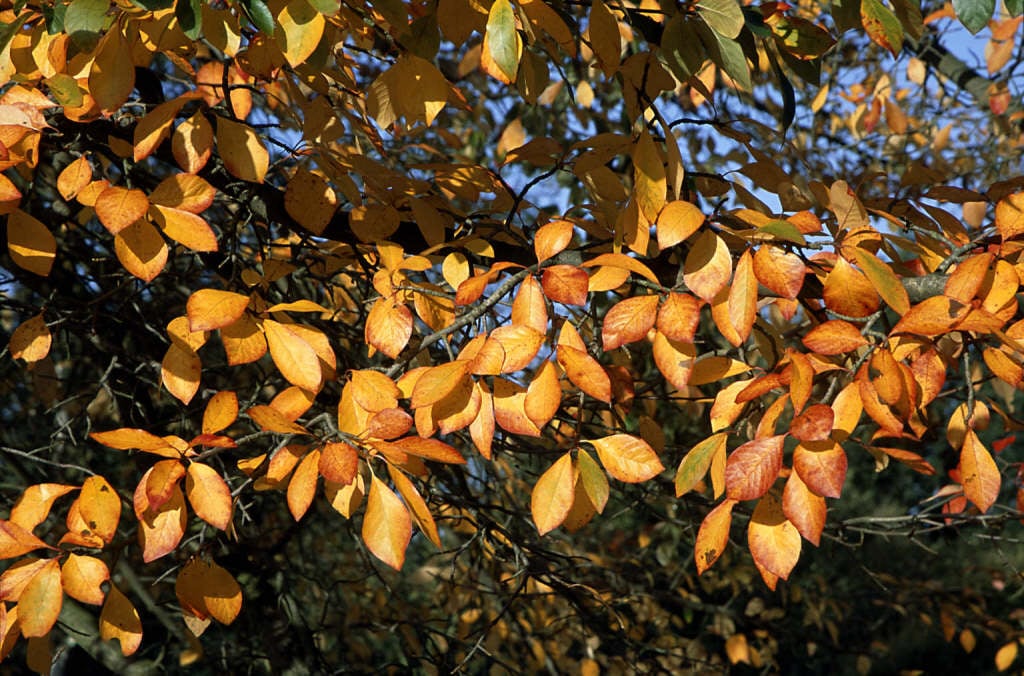Nyssa sylvatica
tupelo
A small, slow-growing deciduous tree of elegant, broadly conical habit. Ovate leaves to 15cm in length turn brilliant red and yellow in autumn. Flowers and fruits inconspicuous
Synonyms
Nyssa multifloraSize
Ultimate height
Higher than 12 metresTime to ultimate height
20–50 yearsUltimate spread
Wider than 8 metresGrowing conditions
Moisture
Well–drainedpH
Acid, NeutralColour & scent
| Stem | Flower | Foliage | Fruit | |
| Spring | Green | |||
|---|---|---|---|---|
| Summer | Green | Green | ||
| Autumn | Orange Red Yellow | Black Blue | ||
| Winter |
Position
- Full sun
- Partial shade
Aspect
West–facing or South–facing or East–facing
Exposure
Sheltered Hardiness
H6Botanical details
- Family
- Nyssaceae
- Native to GB / Ireland
- No
- Foliage
- Deciduous
- Habit
- Bushy
- Genus
Nyssa are deciduous trees with ovate leaves colouring brilliantly in autumn; inconspicuous flowers are followed by small, dull purple fruits
- Name status
Correct
- Plant range
- Eastern N America
How to grow
Cultivation
Grow in moist, humus-rich, fertile soils with shelter from cold, dry winds. Resents transplanting so grow from small containerised plants
Propagation
Propagate by seed sown in a seedbed in autumn or by softwood cuttings in early summer or semi-hardwood cuttings in mid-summer
Suggested planting locations and garden types
- Architectural
- Low Maintenance
Pruning
Pests
Generally pest-free
Diseases
May be susceptible to honey fungus in gardens where it is present but insufficient data to determine degree of susceptibility
Get involved
The Royal Horticultural Society is the UK’s leading gardening charity. We aim to enrich everyone’s life through plants, and make the UK a greener and more beautiful place.
